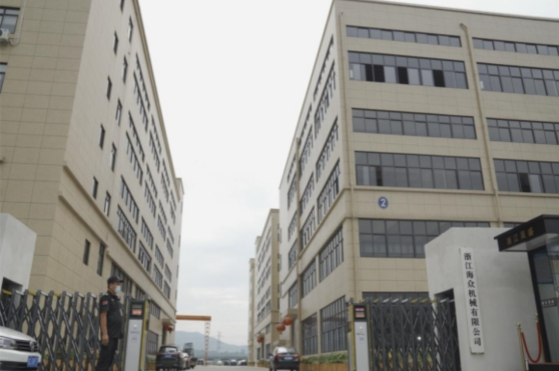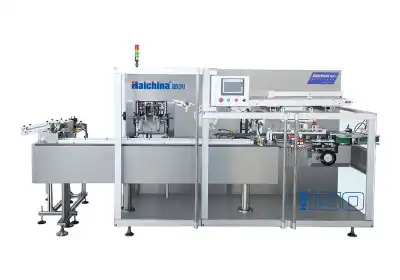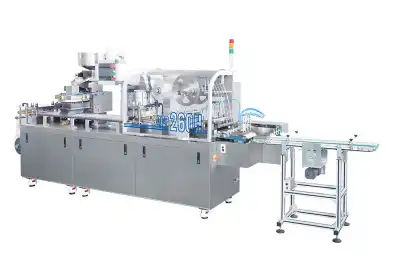Understanding Blister and Strip Packaging Technologies
The Mechanics of Blister Packaging
Blister packaging is a versatile and widely adopted packaging solution in various industries, particularly pharmaceuticals and consumer goods. At its core, a blister pack consists of a pre-formed plastic cavity or pocket, often made from thermoformed plastic, which is then sealed with a backing of paperboard or aluminum foil. This construction creates individual compartments for each product unit, offering both protection and visibility.
The process of creating blister packs typically involves a blister packaging machine, which automates the formation of cavities, product placement, and sealing. These machines can handle high-volume production, making them ideal for large-scale manufacturing operations. The plastic used in blister packaging is often polyvinyl chloride (PVC), though more environmentally friendly options like polyethylene terephthalate (PET) are gaining popularity.
One of the key advantages of blister packaging is its ability to provide a barrier against external elements. The sealed nature of each compartment protects the product from moisture, air, and light, which is crucial for maintaining the integrity of pharmaceuticals and sensitive consumer goods. Additionally, the transparent front allows for easy product identification and visual inspection, enhancing both marketability and quality control.
The Simplicity of Strip Packaging
Strip packaging, in contrast to blister packaging produced by a blister packaging machine, employs a simpler design and production process. It typically consists of two layers of flexible material, such as plastic film or aluminum foil, sealed together to enclose the product. The strip can be easily torn or cut to access individual units, making it a popular choice for small, uniform products like tablets or capsules.
The production of strip packaging is generally less complex than blister packaging, often requiring less sophisticated machinery. This simplicity can translate to lower production costs and faster manufacturing times. Strip packaging machines are designed to efficiently seal products between two layers of material, cut them into individual units or longer strips, and sometimes perforate them for easy separation.
While strip packaging may not offer the same level of protection as blister packs, it excels in areas where space efficiency and minimal material usage are priorities. The flat profile of strip packaging allows for compact storage and transportation, which can be advantageous in certain supply chain scenarios.
Comparative Analysis of Production Processes
When comparing the production processes of blister and strip packaging, several factors come into play. Blister packaging generally requires more complex machinery, including thermoforming equipment to create the plastic cavities. This complexity can lead to higher initial investment costs but may offer greater versatility in terms of package design and product accommodation.
Strip packaging, with its simpler construction, often allows for faster production speeds and lower material costs. However, it may have limitations in terms of product protection and presentation compared to blister packaging. The choice between these two methods often depends on the specific requirements of the product, target market, and production scale.
Both packaging types have seen advancements in automation and efficiency. Modern blister packaging machines can integrate various processes, from cavity formation to final sealing, in a single production line. Similarly, advanced strip packaging systems can handle high-speed production with precision cutting and sealing.
Key Considerations in Choosing Between Blister and Strip Packaging
Product Protection and Shelf Life
When it comes to product protection, blister packaging often has the upper hand. The rigid plastic cavity provides a physical barrier against crushing or impact, which is particularly important for fragile items like tablets or small electronics. The hermetic seal created in blister packs also offers superior protection against moisture and oxygen, which can significantly extend the shelf life of pharmaceuticals and other sensitive products.
Strip packaging, while not as robust in terms of physical protection, can still offer adequate barrier properties depending on the materials used. High-barrier films or foils can provide good protection against moisture and light, making strip packaging suitable for many pharmaceutical applications. However, for products that require maximum protection or have longer shelf lives, blister packaging is often the preferred choice.
The choice between blister and strip packaging can have a direct impact on product longevity and quality maintenance. Manufacturers must carefully consider the specific storage and handling requirements of their products when making this decision.
Consumer Convenience and Compliance
Consumer convenience plays a crucial role in packaging selection, especially in the pharmaceutical industry where patient compliance is paramount. Blister packs produced by a blister packaging machine offer clear advantages in terms of dosage management. Each unit is individually sealed and often labeled, making it easy for patients to track their medication intake. This feature is particularly beneficial for complex medication regimens or for patients who may have difficulty remembering whether they've taken their medication.
Strip packaging, while not as visually organized as blister packs, offers its own form of convenience. The ability to easily tear off individual doses can be appealing to consumers, especially for on-the-go use. Some strip packaging designs incorporate perforations or easy-tear notches to enhance user-friendliness.
Both packaging types can be designed with child-resistant features, an important consideration for potentially harmful products. However, blister packaging often has an edge in creating tamper-evident designs, which can be crucial for certain pharmaceuticals and consumer goods.
Cost and Sustainability Factors
Cost considerations often play a significant role in packaging decisions. Strip packaging generally has lower production costs due to simpler machinery requirements and potentially lower material usage. This can make it an attractive option for high-volume, low-margin products or for markets where cost is a primary concern.
Blister packaging, while potentially more expensive to produce, can offer long-term cost benefits through enhanced product protection and reduced waste due to damage or spoilage. The initial investment in a sophisticated blister packaging machine can be offset by improved production efficiency and product quality over time.
Sustainability is an increasingly important factor in packaging choices. Strip packaging often uses less material overall, which can be seen as more environmentally friendly. However, advancements in blister packaging technology have led to the development of more sustainable options, such as biodegradable plastics or recycled materials.
Both packaging types can be designed with recyclability in mind, though the multi-material nature of some blister packs can pose recycling challenges. Manufacturers are increasingly exploring mono-material solutions or easily separable components to improve the environmental profile of their packaging.
Industry-Specific Applications and Trends
Pharmaceutical Packaging Innovations
The pharmaceutical industry has been at the forefront of packaging innovations, driven by the need for product safety, patient compliance, and regulatory requirements. Blister packaging has seen significant advancements, particularly in the area of child-resistant and senior-friendly designs. Modern blister packs often incorporate features like peel-push openings or multiple-step processes to access the medication, balancing safety with usability.
Strip packaging in pharmaceuticals has evolved to include smart features such as printed QR codes or NFC tags that can provide patients with dosage information or track medication adherence. This integration of technology is bridging the gap between traditional packaging and digital health solutions.
Both blister and strip packaging are being adapted to meet the growing demand for personalized medicine. Blister packaging machines are now capable of producing smaller batches with customized dosages, while strip packaging systems can create individualized medication packs for patients with complex regimens.
Consumer Goods and Electronics Packaging Trends
In the consumer goods sector, blister packaging continues to be popular for its ability to showcase products while providing protection. Electronics manufacturers, in particular, favor blister packs for small items like batteries, memory cards, and accessories. The transparency of blister packaging allows consumers to inspect products before purchase, which can be a significant advantage in retail environments.
Strip packaging is finding new applications in the consumer goods sector, particularly for products that benefit from portion control or single-use packaging. This includes items like cosmetic samples, single-serve food products, and cleaning wipes. The simplicity and cost-effectiveness of strip packaging make it an attractive option for these types of products.
Both packaging types are seeing innovations in materials and designs to enhance sustainability. Biodegradable plastics, recycled content, and easily recyclable mono-materials are becoming more common in both blister and strip packaging applications.
Emerging Markets and Global Packaging Preferences
The choice between blister and strip packaging can vary significantly across different global markets. In emerging economies, strip packaging often dominates due to its lower cost and simpler production requirements. This is particularly evident in the pharmaceutical markets of countries like India and parts of Southeast Asia, where strip-packed medications are the norm.
However, as these markets develop and regulatory standards evolve, there's a growing shift towards blister packaging, especially for higher-value pharmaceuticals and consumer goods. This transition is driven by factors such as improved product protection, anti-counterfeiting measures, and changing consumer preferences.
In more developed markets, blister packaging remains prevalent, particularly in pharmaceuticals and high-value consumer goods. However, there's an increasing focus on sustainability, leading to innovations in both blister and strip packaging materials and designs.
Global packaging preferences are also influenced by cultural factors and local regulations. For instance, some markets may prioritize tamper-evidence features, favoring blister packs, while others might emphasize minimal packaging waste, potentially leaning towards strip packaging solutions.
Conclusion
The choice between blister packaging and strip packaging is not a one-size-fits-all decision. Each method offers distinct advantages and challenges, making them suitable for different products and market scenarios. Blister packaging produced by a blister packaging machine excels in product protection, visibility, and tamper-evidence, making it ideal for pharmaceuticals and high-value consumer goods. Strip packaging, with its simplicity and cost-effectiveness, is well-suited for products requiring basic protection and those prioritizing minimal material usage. As packaging technology continues to evolve, manufacturers must carefully consider factors such as product characteristics, target market preferences, regulatory requirements, and sustainability goals when making their packaging decisions. Ultimately, the most suitable choice will align with both the product's needs and the company's broader strategic objectives.
Contact Us
For more information on innovative packaging solutions tailored to your specific needs, contact Zhejiang Haizhong Machinery Co.,Ltd. at [email protected]. Our team of experts is ready to help you find the perfect packaging solution for your products.





